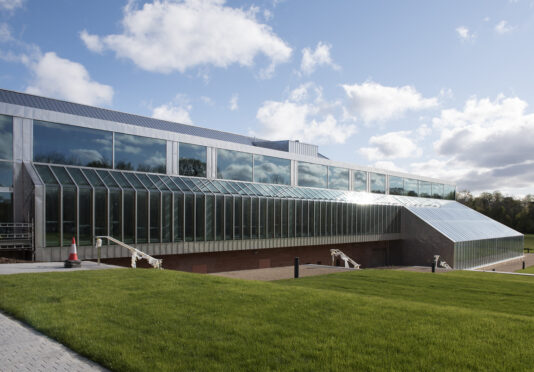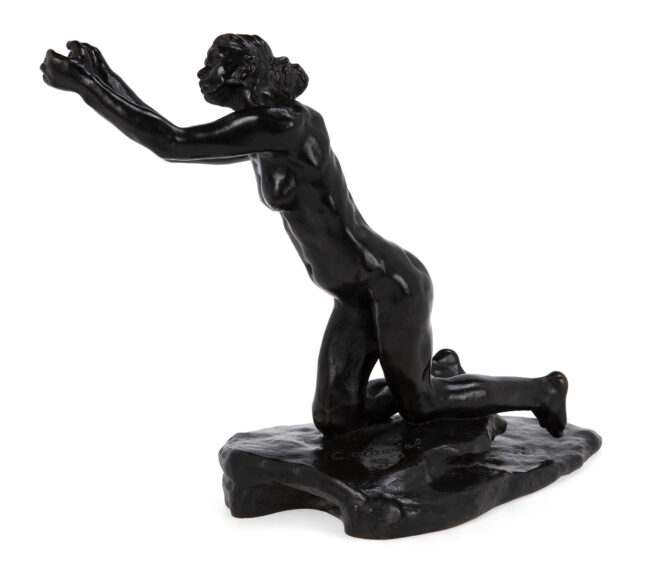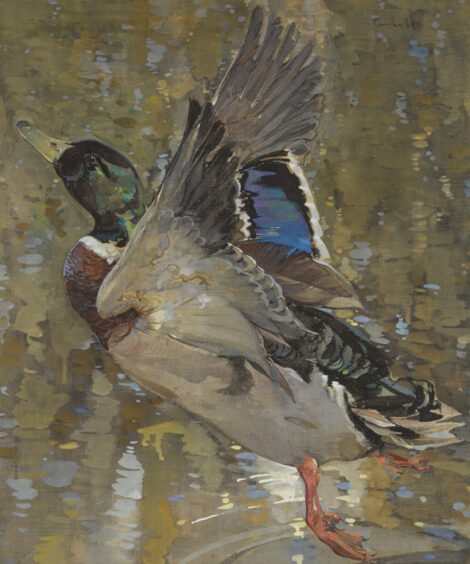
The inaugural exhibition at the newly-renovated Burrell Collection will chart how the vast array of objects were brought together and then donated to the city of Glasgow.
The Burrells’ Legacy: A Great Gift to Glasgow tells the story of the collecting and legacy of Sir William Burrell and his wife Constance, Lady Burrell.
Opening on August 27, the free exhibition includes over 100 extraordinary objects that help tell the story of how the treasure trove went from being a couple’s private art collection to a civic museum of international significance.
Duncan Dornan, Head of Glasgow Life Museums and Collections said: “Since opening in March, the popularity of The Burrell Collection, together with positive feedback from visitors, highlights the huge affection that exists for the museum and Collection.
“The breadth and scale of that Collection, which continues to grow today thanks to the work of the Burrell Trustees, has inspired people, from its initial donation in 1944 to its refurbishment and redisplay over 75 years later.
“It seems appropriate that the first exhibition in the new Burrell reveals more about the couple themselves and the story behind the creation of the wonderful museum in which their Collection is housed.”
The Burrells had rarely collected objects from ancient civilisations, but once they had committed to handing it over to the city they turned their attention to making the collection representative of worldwide history.
The exhibition explains the renewed focus on this area of collecting and introduces some stunning ceramics, jewellery and art from Greece, Egypt, and ancient Mesopotamia.
It also features reference books from Burrell’s personal library of over 1,000 books, also gifted to the city after Constance, Lady Burrell’s death.
Professor Frances Fowle, Senior Trustee, Sir William Burrell Trust, said: “The Trustees are delighted to sponsor this inaugural exhibition of the newly refurbished Burrell Collection.
“It is a testament to Sir William and Constance, Lady Burrell’s love of beautiful objects and to the quality and international scope of the Collection.
“It is also a tribute to their generosity as donors, not only to the city of Glasgow but to their local town of Berwick-upon-Tweed.”
For the first time, The Burrells’ Legacy: A Great Gift to Glasgow will reunite works the Burrells gifted to Berwick. The family lived in Hutton Castle, where a great many of their treasured artworks were on display and used in daily life.
In 1949 they donated 42 paintings to the town, establishing the Berwick Art Gallery. They also donated over 300 decorative art objects, including Chinese and Japanese porcelain, Venetian glass, and pewter.
The exhibition offers a rare opportunity to see artwork acquired by Burrell, on loan from Northumberland Museum, alongside delicate works on paper seldom on show for their protection.
On show are works including several examples of Japanese Imari ware porcelain, not held in The Burrell Collection. These are displayed alongside colourful Japanese woodcut prints created in the 1600 – 1800s.
The exhibition also goes on to explore the search for somewhere to build The Burrell Collection and the competition to appoint architects to create a fitting museum to showcase the incredible breadth of artwork.
It showcases some of the most avant-garde ideas, including proposals that would have displayed the Collection in a building shaped as three linked cows, while another would have housed it underground, covered with a roof made of five large glass domes, emerging out of the Pollok estate.
New additions
The exhibition also considers the ongoing role of the Sir William Burrell Trust, which was established after his death to allow the Collection to continue to grow.
Appointed Trustees provide expertise on and fund the acquisition of new objects, as well as supporting conservation and research on different aspects of the Collection, including stained glass, tapestries, and paintings.
Among the show’s main attractions are two recent purchases by the Trustees, which visitors can view for the first time.
In 2021, The Burrell Collection became the first public UK collection to acquire a work by French sculptor Camille Claudel. L’Implorante is the first sculpture by a woman to enter the Collection.
William Burrell also had a passion for the work of Glasgow Boy artist Joseph Crawhall. The painting, A Mallard Rising, was originally put up for sale in 1935.
Burrell bought 11 Crawhall works at the auction, but missed out on purchasing this watercolour, the prized lot of the sale. Nearly 77 years later, the Burrell Trustees managed to finally acquire it for the Collection.
Laura Bauld, Burrell Project Curator at Glasgow Life Museums, who put the exhibition together, said: “It’s been an absolute joy working on this exhibition. Sir William Burrell and Constance, Lady Burrell had a lifelong commitment to collecting, and their generosity in donating their wonderful Collection to Glasgow is astounding. Their gift has allowed generations of people, just like me, to enjoy breath-taking art from across the world and across time.
“By selecting over 100 objects for display, many to be seen for the first time in a generation, I’ve learned more about their work and got to know the different people who were involved in creating The Burrell Collection. Burrell was such a thorough, prolific collector, we could have shown so much more.
“This first exhibition is full of wonderful objects and the stories behind them. I hope people enjoy discovering more about the Burrells and how the world-class museum came to be located in Glasgow.”
The Burrells’ Legacy: A Great Gift to Glasgow opens on Saturday 27 August, it is free to enter. A publication accompanying the exhibition will be available from The Burrell Collection priced £6.99.

Enjoy the convenience of having The Sunday Post delivered as a digital ePaper straight to your smartphone, tablet or computer.
Subscribe for only £5.49 a month and enjoy all the benefits of the printed paper as a digital replica.
Subscribe
